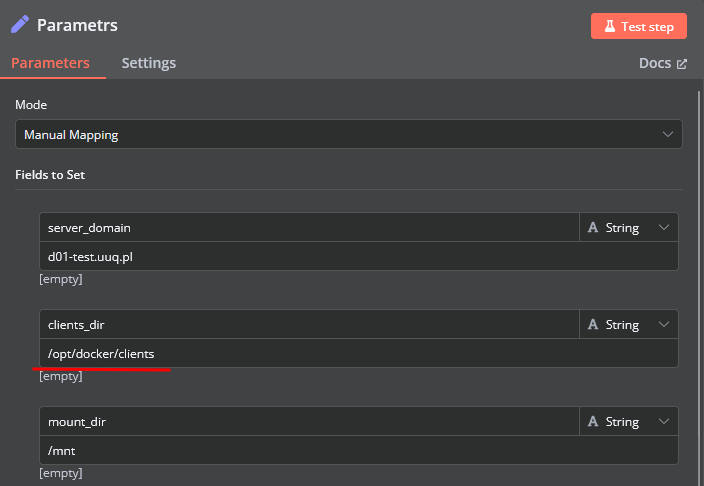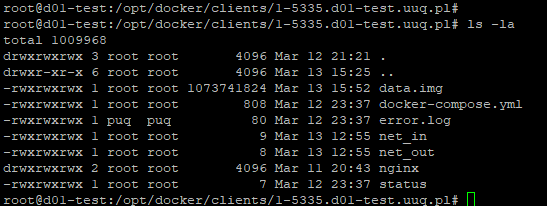Client Container Concept and Structure
Container Deployment
In our deployment scenarios, we use Docker Compose for managing client containers.
Important Directories
The nginx-proxy directory must remain unchanged. Its path is:/opt/docker/nginx-proxy
This directory contains essential components:
docker-compose.yml– Docker Compose configurationcerts/– SSL certificates for domainsnginx/– Nginx configuration files mounted into the containerhtml/– Web root directoryvhost.d/– Virtual host configurations
List of required directories:
/opt/docker/nginx-proxy
/opt/docker/nginx-proxy/certs
/opt/docker/nginx-proxy/nginx
/opt/docker/nginx-proxy/html
/opt/docker/nginx-proxy/vhost.d
Client Container Data Directories
Each client container has its own data directory. The base path for storing user-related Docker files and disk images can be set individually for each n8n workflow involved in service management.
- The clients_dir option defines the storage directory for user data.
- Default path:
/opt/docker/clients
Within this directory, subdirectories are created based on the primary domain name of the service. The domain acts as a reference point for the entire service.
Each service directory contains:
docker-compose.yml– Service-specific Docker Compose configurationstatus– A file storing the container status, which reflects the billing system state (e.g., active, suspended, etc.)nginx/– Nginx proxy configuration for the domain and containerdata.img– Disk image for container data
Before a container starts, the data.img file is mounted into the system using n8n automation. The necessary entries are added to /etc/fstab, ensuring that containers automatically restart after a server reboot.



No Comments